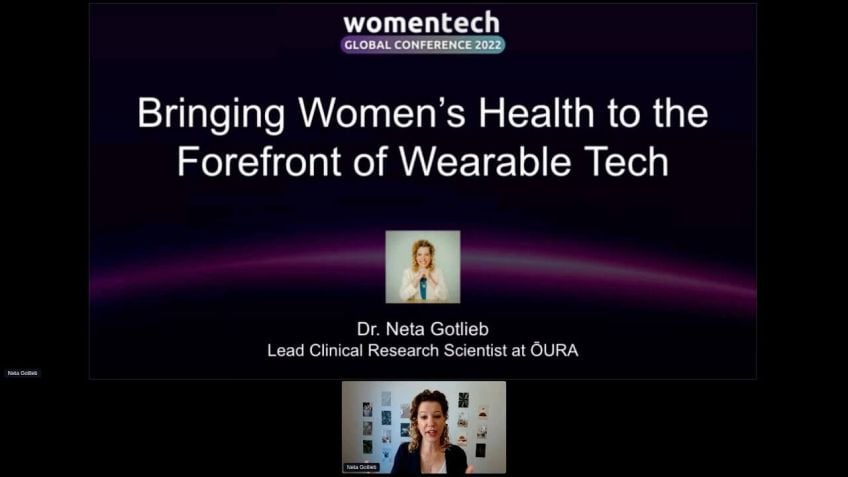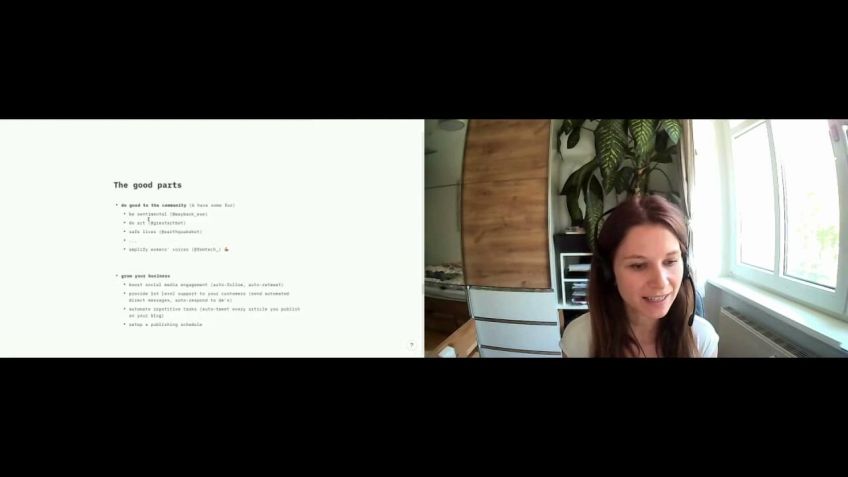Why understanding investment is key to driving innovation by Marina Gerner
Reviews
Femtech: Bridging the Gender Gap in Technology and Investment
Hi there! It's an honour to have your attention as we delve into the exciting and often under-discussed realm of female technology, or Femtech. As a London-based journalist and adjunct professor at the NYU Stern School of Business, my curiosity on this topic has been piqued, leading to extensive research, discussions and, ultimately, an upcoming book on the same.
What is Femtech?
For those of you who are new to the term Femtech, it's technology developed specifically with women's health and pleasure at the forefront. Unlike Fintech, which primarily deals with financial technology, Femtech covers a broad range of digital platforms to medical devices – all designed to cater to women and their unique health concerns.
Misconceptions about Women's Health
Consider this - the typical symptoms of a heart attack that most people know of are mostly associated with men. From chest pain radiating to the left arm to severe discomfort that feels like an immense weight on the chest, all these symptoms are usually associated with men. The Hollywood portrayal of 'old men' having heart attacks doesn't help, either.
In actuality, women are just as likely as men to have heart attacks, especially after menopause. However, due to lack of knowledge on spotting cardiovascular health issues in women, many women tend to seek medical help much later than they should.
Femtech Companies Bridging the Gap
Thankfully, some forward-thinking Femtech companies are beginning to address the lack of data and awareness about women's health conditions, like this one that has developed a 'smart bra' to monitor heart health. Their pioneering work is helping to fill the massive gender data gap in healthcare.
Investing in Femtech
One major stumbling block interfering with positively disrupting this niche is arguably the reluctance from majority male-oriented venture capital investors to talk about topics like childbirth, menopause and sexual pleasure. Understandably, these topics can be uncomfortable for some, but that discomfort becomes a barrier to progression.
- Even though startups founded by women have doubled over the last decade, they still receive a minuscule 2% of overall VC capital.
- About 90% of venture capital investors in the UK and the US are men.
So, it's clear that if we want to see more innovation to benefit women, there is a need for women and other underrepresented groups to better understand the world of investment.
Personal Investment – A Growing Trend
The rise of self-directed or DIY investors is a promising trend on the horizon. Thanks to the internet, we now have tools that facilitate personal investing – much like booking a holiday or finding a date online. This means more people can become DIY or Angel investors, investing in early-stage companies and potentially turning the tide in Femtech's favour. For example, the startup success story Hopin has raised over $1 billion in venture capital, proving the potential of this nascent industry.
A Look into the History
Did you know that in 1840, nearly half of Britain's government bond investors were women? It might seem surprisingly, but remember that investing has not always been a men's world.
Wrapping Up
Investing can empower women to drive the innovation they want to see, particularly in niches like Femtech. By taking control of our finances, investigating where our money (pension funds, for instance) is invested, and considering DIY investing, we can make a difference. I encourage anyone interested to dive further into this topic through additional reading and discussion. If you'd like to learn more about my work in Femtech or investment, please stay in touch. Looking forward to hearing from you!
By Marina Garner
Video Transcription
Hello, everybody. Um I hope you've been having a great day so far. My name is Marina Garner. I'm a London based journalist and an adjunct professor at the NYU Stern School of Business. Um and I'm working on a book about female technology Femtech.So that's not fintech, financial technology, but female technology Femtech. Um Have you heard of it before? Just out of interest? Let me know in the chat. Yeah. No. OK, great. So female technology is technology that is focused on women's um health and pleasure and it can encompass everything from digital platforms to medical devices. And there's a lot of innovation going on in that field that you may not necessarily know about just because there's so much stigma around female bodies. So that's something I I'm super interested by. Um And it's a great pleasure for me to speak at the Women in Tech Global Conference. I'm going to give you a very brief talk on why I think that understanding investment is key to driving innovation and in particular why I think that more women need to understand the world of investment to drive the kind of innovation that we want to see for ourselves.
So I'm going to start by asking you a question about health. If you think about the typical per the typical symptoms of a person who is experiencing a heart attack. What are the symptoms that you think of? Please let me know in the chat. It's not a medical question, just, you know, a layman's idea of, of what kind of symptoms you would think of stress. Yeah. Any other thoughts. So usually people would say, you know, chest pain and a pain that's radiating to the left hand side of your body and to your left arm or left hand side of your chest. Um Some of us also tend to think of the heavy weight of an elephant sitting on, on your chest. And most of us when we think of a person who's having a heart attack, we think of an old man. So that's what we tend to see in uh movies. It's the kind of representation we tend to be aware of. But in reality, women are just as likely as men to have a heart attack, especially after menopause. It's just that we know a lot less about how to spot cardiovascular health issues in women. And for that reason, women tend to wait much longer to seek medical help.
Uh Women are much more likely to be misdiagnosed and women are only half as likely as men to receive recommended um heart attack related treatments. And there's a, a long, you know, explanation to do with medical history as to why that's the case, which I'm not going to go into now, but simply put uh we thought for a long time that women are just smaller versions of men. Uh And for that reason, a lot of our medical devices and a lot of our drugs were created for the standard male body. But now we know that that's not the case. And we know that women experience a lot of health issues in a way that's drastically different from how men experience them. Um So three years ago, let me go to the next slide, my slides are basically my articles. So if you want to read more about any of the things I mentioned, you know, feel free to look up those articles afterwards. Uh Three years ago, I came across a company that created a smart bro which can measure our heart health related data. And the idea is to fill some of that gender data gap that we currently have in cardiovascular health. So for the last three years, I've been researching and writing about tech companies that innovate for women's health. That's what my book is about.
And the central problem that I'm encountering again and again is that when it comes to women's health and in particular, when it comes to vagina centric innovation. So, you know, anything around childbirth or menopause uh or sexual pleasure um encounters this huge obstacle that men don't tend to want to talk about vaginas in a business setting simply because they are um embarrassed by it. And this has led me to write this article for Wired Magazine called We need to talk about investors problem with vaginas. And when you read this article, you will see that 90% of venture capital investors in the UK and in the US are men. And even though the proportion of start ups that are founded by women has gone up over the last decade, it has doubled from about 10 to 20%. The investment that female founders receive is still very, very low. It's only about 2% of overall VC capital. So I argue that if we want to see more innovation that's made by us, for us, we need to understand the world of investment a lot better. I think that's, that's a major part of it. Um So just for those of you who, you know, don't typically read or write about investments, I wanted to just very briefly explain what investing is.
So you can think of the stock market as a, as a marketplace, you know, companies raise money in order to grow and tech companies in particular rely on VC funding. So for the sake of of simplicity, imagine if you're running a cafe in your neighborhood and your cafe is going well, you're making a profit. If you want to open another branch of your cafe in another part of town, but you don't have the capital to do that, then you can involve an investor, right? And that's, that's a great thing in many ways. Um because it means you don't have to have the capital yourself. Somebody else gives you the capital and in return, they get a stake or uh you know, an equity stake, a share in your company and they benefit from your profits as well. And if you think that the world of investment does not have an impact on your life right now, then let me give you two examples of how it does. Um The first thing is that the innovation that we see and in particular, the technology that we see around us has benefited from BC capital.
So, so for example, hop in the platform that we're on right now, um I looked it up earlier on Crunch Base and it's received over $1 billion in BC capital, over about seven rands of financing. So, you know, we're on this platform right now because of venture capital. And second, if you are employed, if you work for a company, if you're an employee somewhere, um the likelihood is that you have a workplace pension and the money in your pension is invested in the stock market. Usually it's invested in big and listed companies uh rather than start ups. But if you don't know where your pension money is invested, you know, then that means you could find yourself in a situation where, for example, you're an oncology specialist who spends her whole life on the prevention and treatment of lung cancer. But your pension money could actually be invested in the tobacco industry. Um, if your pension fund doesn't have the right exclusion criteria in place. So I always recommend that people look at where their pension money is actually uh invested and something else that's super fascinating about the world of investment is that it's become much more democratic.
Over the last two decades, we've seen a rise of self directed investors who are sometimes also called Diy investors. And that's thanks to the internet, which makes a lot of sense when you think about it. Um the internet has given us tools to, you know, take matters into our own hands in so many areas of life, right? So if you want to find the love of your life, you download a dating app, you don't need a matchmaker, for example, right? Uh If you want to go on holiday, then you don't need a travel agent anymore, you just book your holiday. And the same is true for personal finance, the same is true for diy investing. So those digital platforms that have sprung up over the last two decades have leveled the playing field. They've enabled more people who have historically just kept cash in the bank to invest without consulting a financial advisor. And I think there's something really interested, interesting in that because the more people can become diy investors, the more people are going to see become angel investors as well, which is, um you know, angel investors tend to invest in in early stage companies. Uh they tend to be high net worth individuals, so they take on a huge amount of risk. And then I think we're more likely to see more people become VC investors and hopefully that will include more women as well as more people from um you know, underrepresented backgrounds.
So I have been researching the history of women in relation to the investment wealth. Um And there's a statistic that I want to leave you with. I want you to guess the percentage of Britain's government bond investors who were women in 1840. So I'll just put the question in the chat as well to make it easier and then just, just write the percentage that you think, ok, we've got 20%. Any other guesses? 10%? Ok. Good. Keep it coming. 30% 1.2% 45% 3%. Ok. I like the variety in that some of you are taking a risk by going all out. Um Yeah, so I think our winner is Artie. Um, nearly half of Britain's government bondholders were women in 1840 the shareholder figures were a bit lower between 15 and 30%. And I, I think what's, what's so amazing about it is for us to realize that investing has not actually always been a men's wealth. Um And I think we can encourage more women to take an interest and then hopefully invest in the kind of innovation that we want to, to see and the kind of innovation that we urgently need and want. Um and my 10 minutes are up, but I'm going to post some more links for you in the chat. If you want to read more of my work on, um, female technology and innovation for, for female bodies, let me just post it in the chat.
There's some articles and then people always ask me what to read about how to invest in the stock market. So here two books I can recommend and then, um, my book in particular is coming out in January 2024. As you can imagine it takes a long time to, to write a book. Um, but yeah, feel free to stay in touch with me if you want to, to learn more about it. Um, and I'll be, I'll be happy to hear from you. All right. Take care.






No comments so far – be the first to share your thoughts!